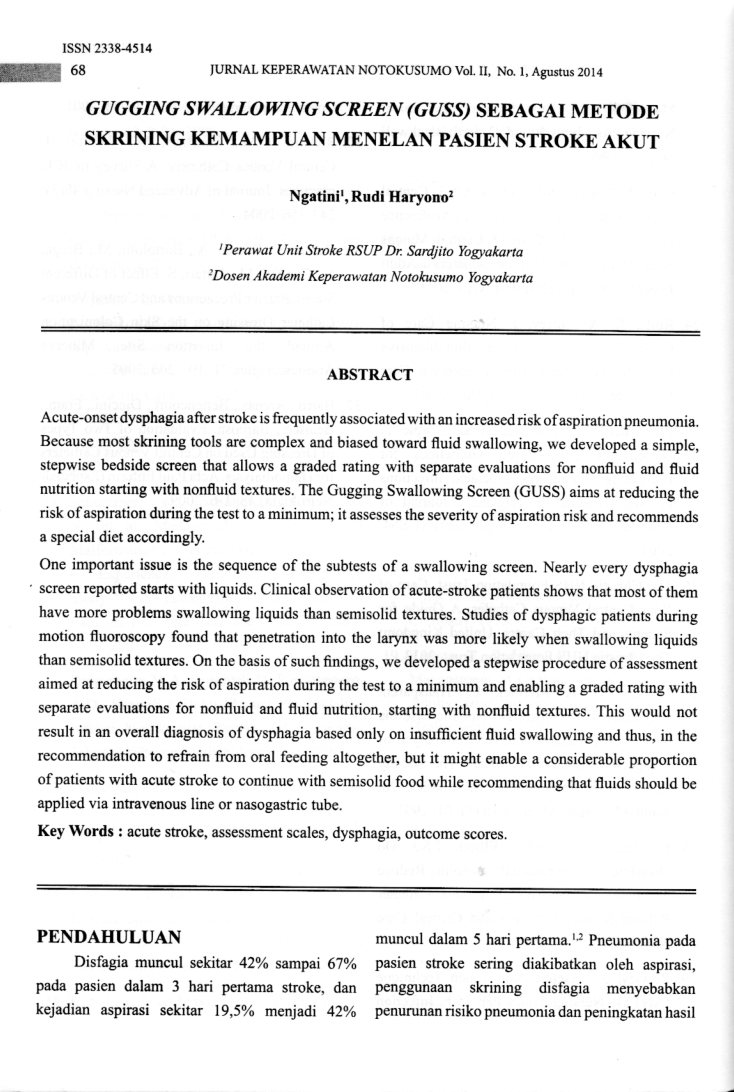Gugging Swallowing Screen (GUSS) Sebagai Metode Skrining Kemampuan Menelan Pasien Stroke Akut
Keywords:
Acute Stroke, Assesment Scale, Dysphagia, Outcome ScoreAbstract
Acute-onset dysphagia after stroke is frequently associated with an increased risk of aspiration pneumonia. Because most skrining tools are complex and biased toward fluid swallowing, we developed a simple, stepwise bedside screen that allows a graded rating with separate evaluations for nonfluid and fluid nutrition starting with nonfluid textures. The Gugging Swallowing Screen (GUSS) aims at reducing the risk of aspiration during the test to a minimum; it assesses the severity of aspiration risk and recommends a special diet accordingly.
One important issue is the sequence of the subtests of a swallowing screen. Nearly every dysphagia screen reported starts with liquids. Clinical observation of acute-stroke patients shows that most of them have more problems swallowing liquids than semisolid textures. Studies of dysphagic patients during motion fluoroscopy found that penetration into the larynx was more likely when swallowing liquids than semisolid textures. On the basis of such findings, we developed a stepwise procedure of assessment aimed at reducing the risk of aspiration during the test to a minimum and enabling a graded rating with separate evaluations for nonfluid and fluid nutrition, starting with nonfluid textures. This would not result in an overall diagnosis of dysphagia based only on insufficient fluid swallowing and thus, in the recommendation to refrain from oral feeding altogether, but it might enable a considerable proportion of patients with acute stroke to continue with semisolid food while recommending that fluids should be applied via intravenous line or nasogastric tube.












